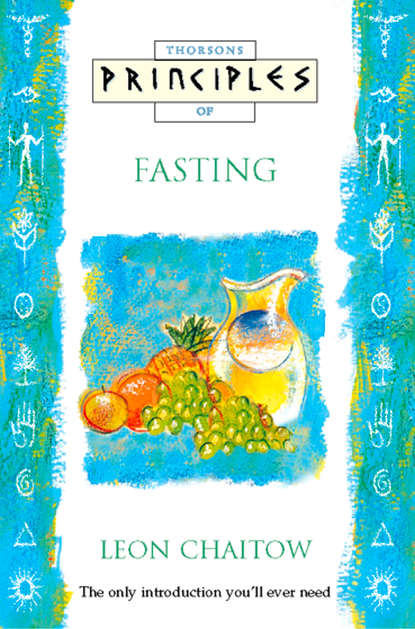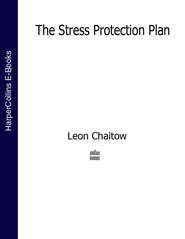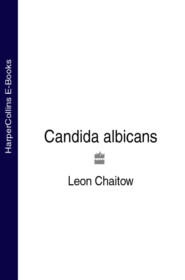По всем вопросам обращайтесь на: info@litportal.ru
(©) 2003-2024.
✖
Fasting: The only introduction you’ll ever need
Автор
Год написания книги
2019
Настройки чтения
Размер шрифта
Высота строк
Поля
LONG OR SHORT FASTS?
In the UK, between the First and Second World Wars, Stanley Lief ND, DC, the gifted naturopathic healer, supervised thousands of successful lengthy fasts at Champneys, the health resort in Hertfordshire which he ran for over 30 years. The longest fast recorded at Champneys lasted for over three months (95 days), the outcome of which was the patient’s complete recovery from chronic ill-health (I know because I met the ‘patient’ some 30 years later during my own working period at Champneys in the early 1960s).
In the USA, Herbert Shelton, the pioneer practitioner of Natural Hygiene, also initiated and supervised numerous fasts in severely ill patients, often with amazing results.
If these two practitioners, and their countless followers, achieved such wonderful results, why are we not told more of fasting as a means of healing?
Well, to be sure, we are, but you have to search for reports of fasting benefits in the medical journals, where only now and then evidence appears which supports the results claimed for this most ancient, efficient and potentially inexpensive of healing methods.
In 1991, for example, the prestigious medical journal The Lancet published the results of a one-year study of patients with rheumatoid arthritis who had been treated by means of fasting and a vegetarian diet.
WHAT PREVENTS THE WIDER USE OF FASTING?
The results of fasting patients with rheumatoid arthritis were so good that there can now be no doubt at all that fasting should be the treatment of choice for this condition – and for almost all auto-immune conditions in which the body’s defence systems attack parts of itself. That few rheumatologists employ fasting for their patients is indicative of both the lack of awareness of such studies by most doctors, and the power of the pervading idea that we have to ‘take something’ to assuage symptoms, or to control pain and disability.
To be fair, even when faced with the evidence of the value of fasting, many people will still opt for the dubious convenience of swallowing pills and potions rather than doing something for themselves to restore their health by methods which are slow, sometimes uncomfortable, and which involve effort and will-power.
Fasting involves commitment, acceptance of responsibility for getting well, and a dedicated sense of purpose, and these qualities are not always the first to present themselves when we are faced with a choice between a means of treatment which someone may not fully understand and something which has the backing of current medical authority.
This is why it is so important to be fully aware of the facts about fasting – including its drawbacks, requirements, benefits and potentials before embarking on its use.
DRAWBACKS
There are several potential drawbacks to fasting which need to be highlighted at the outset.
Long fasts (of more than two days) require supervision by a suitably qualified health care professional. This raises the question of cost and time, since staying in a clinic (often for many weeks) where appropriate supervision is available, or paying for regular home visits over an extended period of time, could prove very expensive. Also, since awareness of the value of fasting is limited amongst orthodox medical practitioners, a level of determination is sometimes required to find someone suitably qualified. You will need to look for a fully trained naturopath, a German ‘heilpraktiker’, an Ayurvedic (traditional Indian medicine) practitioner or a clinical ecologist.
Many people find the whole idea of stopping eating for weeks on end too bizarre to contemplate, and they would undoubtedly have anxieties which could make the starting of such a process unwise. For the best results it is essential that the person fasting should be comfortable with the idea, aware of the processes involved, and happy to participate in the healing process.
There is evidence to suggest that because of the increase in levels of environmental toxicity, to which we are all exposed in one way or another, the progress of a fast is far less predictable than it was just 50 years ago when Lief and Shelton were at the peak of their practice of therapeutic fasting.
During a fast, such pollutants and residues from previous medical treatment (e.g. steroid medication) or from ‘social’ use (e.g. tobacco and other drugs) can be released when fat stores are used up – fat is where many toxins are safely stored or ‘dumped’ by a body overloaded with toxic debris – possibly producing reactions of an unpredictable nature as a ‘cocktail’ of chemicals hits the bloodstream.
AN EFFECTIVE COMPROMISE
Given the above drawbacks, which may preclude many from enjoying the benefits of fasting, what modifications are possible which might allow for fasting to be inexpensively and safely applied?
To avoid expense, to make the process less intimidating and, above all, to ensure greater safety – regular short fasts are suggested as an alternative to lengthy or ‘open-ended’ fasts.
The process of detoxification and healing is bound to be less dramatic with this alternative, but it is really the only option open if you cannot afford the expense or the time (leaving out the toxic danger referred to) needed for an open-ended, supervised fast.
WHAT YOU NEED TO KNOW
In this compact but complete introduction to fasting for both health enhancement and spiritual growth, the different techniques and modifications of fasting (long and short) are explained, backed up by research evidence for its use in the treatment of various ailments. It also includes the pros and cons of using fasting as part of a weight maintenance strategy.
Associated detoxification methods are outlined – including various forms of hydrotherapy and the vexed question of supplementation (should you or shouldn’t you during a fast?).
Indications and contraindications to fasting are spelled out, so that by the end you will know when fasting should be used, when it is inappropriate, how to plan, prepare for and start a fast.
You will also have a good idea of what benefits, signs and symptoms to expect on a fast, what to do about breaking the fast (a very important consideration) as well as how often and for how long to fast, taking into account your age, health status, weight, etc.
Evidence is also presented to explain an unexpected bonus from fasting – the increased production of growth hormone (HGH) by the pituitary gland, which helps to retard the ageing process.
For most people, fasting can be a revitalizing experience, restoring energy and a clear mind, as well as helping to remove a host of minor symptoms, while encouraging the self-healing mechanisms of the body to regenerate and rebuild a level of well-being you have probably all but forgotten.
2 (#ulink_f4e12247-5842-5390-9e4c-2c888e75bfee)
FASTING – ANCIENT AND MODERN (#ulink_f4e12247-5842-5390-9e4c-2c888e75bfee)
Partial or total fasting has been used for thousands of years by many religions and cultures as a means of increasing spiritual awareness and religious observation. For example, in Islamic tradition the period of Ramadan is characterized by complete abstinence from food or water during daylight hours for a period of a month. In the Jewish religion a fast day (no food or water) occurs during the ‘Day of Atonement’ (Yom Kippur) and yeasted grain products are avoided during the feast of the Passover, while Christianity has its Lent period when consumption of animal products are restricted prior to Easter.
Biblical descriptions of lengthy fasts are common, with the emphasis on the heightened levels of spiritual awareness that they lead to, and texts also exist showing fasting to be part of pagan ritual, for instance in classical Greek tradition hundreds of years before the Christian era.
(#litres_trial_promo)
FASTING FOR HEALTH 2, 3
Fasting as a health enhancing method also dates back to prehistory, with records of the great physician Hippocrates employing fasts as part of his healing regime for many patients.
‘When one feeds a sick person, one only feeds the sickness.’ (Hippocrates 460–377 BC)
In more recent times the use of fasting as a therapeutic measure has been most widespread in Germany, the UK, Scandinavia and the USA. In these countries in particular there has been a good deal of research which shows the value of fasting in a wide range of diseases, some of which is recounted below.
One of the first doctors to widely advocate fasting in the USA was Isaac Jennings (1788–1874) who eventually abandoned the use of drugs and relied on a programme of vegetarian eating, pure water, sunshine, exercise, emotional balance, rest and fasting to bring about a restoration of health in his patients. With the assistance of a Presbyterian preacher, Sylvester Graham, Jennings promoted his Natural Hygienic methods which became extremely popular as an alternative to the indiscriminate and dangerous drugs in use at the time (early 1820s).
At much the same time in Germany and other parts of Europe the development of a Nature Cure tradition of healing closely mirrored that of the Hygienists, with priests such as Father Kneipp promoting both herbal methods, hydrotherapy and fasting. Towards the end of the nineteenth century the German physicians Henry Lindlahr and Benjamin Lust took these methods to the USA where, with aspects of the Hygienist concept, they and other doctors using the German tradition developed what became Naturopathic Medicine, which had fasting as one of its core strategies (along with dietary reform, herbal medicine, hydrotherapy, physical exercise and manual methods) of health promotion.
Dr John Kellogg (of corn-flake fame), with his vast Battle Creek Sanatorium (where there were over a thousand patients resident at any one time – most of them fasting), and John Tilden MD were two of the leading American doctors to promote fasting during the first half of this century in the USA.
Tilden’s philosophy was summarized in his book Toxaemia – the basic cause of disease, in which he wrote:
Every disease is built within the mind and body by enervating habits. A fast, rest in bed and giving up the enervating habits, mental and physical, will allow nature to eliminate the accumulated toxins, then, if enervating habits are given up, and rational living habits adopted, health will come to stay.
Tilden was emphasizing the main philosophical core of natural healing, that the body is self-healing if it is given the chance, and that the chance comes most effectively when the causes of the illness are removed (‘giving up enervating habits’) and the body is given the chance to recover (‘fast and rest’).
The naturopathic tradition in the USA is now well established, with three seats of higher education issuing doctorates in the subject (Naturopathic schools in Portland, Oregon; Seattle, Washington; and Scottsdale, Arizona). Graduates of these are recognized in approximately a quarter of the states of the USA as primary care physicians. The Bastyr College in Seattle, which became Bastyr University in 1994, is arguably the most dynamic of these training establishments, and is named after the last of the great American pioneers of naturopathy, John Bastyr, who died in 1995 at the age of 83.
(#litres_trial_promo)
It was Stanley Lief, ND, DC, who brought naturopathic concepts and methods to the UK just before the First World War. His enthusiastic, widespread and highly successful application of ‘the fasting cure’ at Champneys Health Resort between 1925 and the late 1950s, helped to promote natural healing in Britain. Lief and his cousin Boris Chaitow, ND, DC, and subsequently Lief’s son Peter, established modern naturopathic awareness in Britain. The long-term professional training of naturopaths in Britain was guaranteed thanks to Lief’s founding of the British College of Naturopathy and Osteopathy in London, where a full-time four-year degree course in osteopathy (validated by the University of Westminster) also contains a sound naturopathic education which incorporates training in the use of therapeutic fasting.
CLINICAL RESEARCH
Fasting research was first begun in the late nineteenth century, with 40-day fasts being closely monitored and the physiological and metabolic effects which took place being carefully recorded. For example, a report in the British Medical Journal in 1880
(#litres_trial_promo) outlines the effects of a 40-day water fast on a Dr Tanner.
In the early twentieth century, therapeutic fasting – where patients were treated using the method – began to be reported in medical journals and in 1910 a report by Dr Guelpa appeared in the British Medical Journal6 on the benefits of fasting in diabetes (see below).









